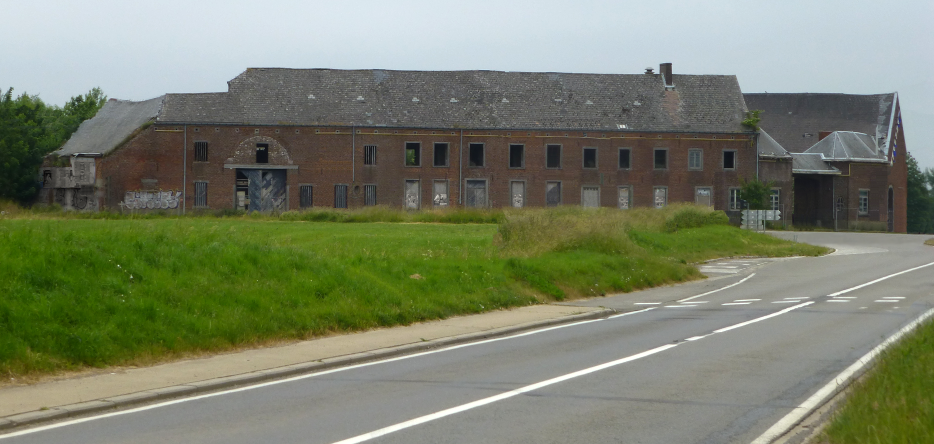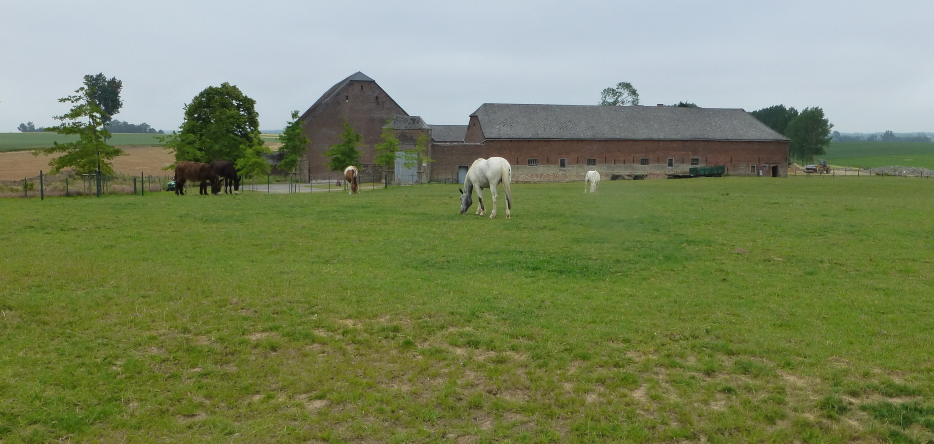Date and place
- June 16th, 1815 near the Quatre-Bras crossroads (province of Namur, Wallonia, Belgium).
Involved forces
- French army of the North (20,000 to 25,000 men) under the command of Marshal Michey Ney, Duke of Elchingen, Prince of the Moskowa.
- Anglo-Dutch army (8,000 men initially then just under 40,000) led by the Duke of Wellington.
Casualties and losses
- French army: just over 4,000 killed, injured or missing.
- Anglo-Dutch army: 4,800 killed, injured or missing.
Aerial panorama of Quatre-Bras battlefield
General situation
On the morning of June 16, 1815, Napoléon I sent Marshal Michel Ney towards the Quatre Bras crossroads [50.57141, 4.45325] thinking that he would find only weak opposition there.
This movement aimed to prepare the following movements towards Brussels
The forces present
Marshal Ney received command of an army of nearly 40,000 men, composed of the troops of Jean Baptiste Drouët d'Erlon
Towards the middle of the day, the situation became clearer. Napoleon now knowed that he would fight Gebhard Leberecht von Blücher at Ligny, but he believed that Ney, not having considerable forces in front of him, would be able to complete the victory by falling back on the right and the rear of the Prussians.
The field
The Quatre-Bras of Baisy-Thy was a strategic road crossroads in Walloon Brabant, at the intersection of the road from Nivelles to Namur and that of Brussels to Charleroi. The fighting took place mainly on either side of the latter, south of the crossroads.

The fights
While, on the same afternoon, the majority of Napoleon I's army faced Marshal Blücher's Prussians and won the Battle of Ligny 15 kilometers to the southeast, Michel Ney opposed Arthur Wellesley, 1st Duke of Wellington's troops.
For long hours, the fields

Nightfall, around 9 p.m., put an end to the confrontation. Ney withdrew in good order to Frasnes
Aftermath
Strategically, the Battle of Quatre-Bras will allow the Allied victory of Waterloo two days later because the failure of the envelopment of the Prussian army by Ney's troops, and in particular by D'Erlon's corps, allowed Blücher to leave Ligny with little damage, and with a good half-day's lead over Emmanuel de Grouchy, whom Napoleon will belatedly launch in pursuit.
Picture - "The Prince of Orange at the Battle of Quatre-Bras" by Jan Willem Pieneman (1779–1853).

The battlefield was at the time more wooded than today, forests offered by William I of the Netherlands to the Duke of Wellington following the victory of Waterloo (in particular the Bois de Bossu, in the heart of the fighting) having been cut down for the purpose of profit; many hedges have also disappeared.